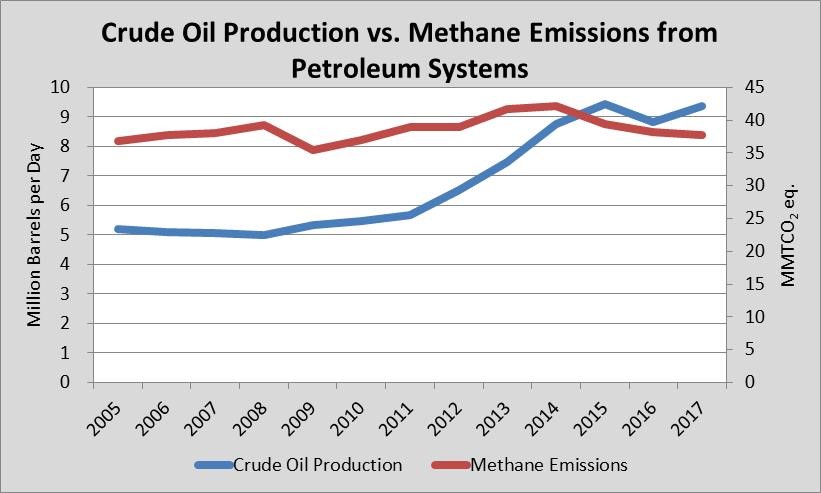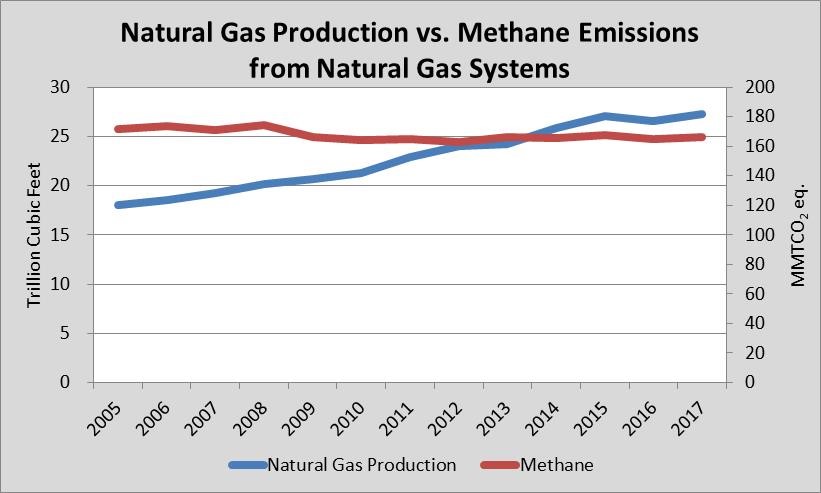One of the big talking points from those opposed to increased domestic oil and gas production is that it leads to greater emissions of methane, a greenhouse gas with about 25 times the global warming potential of carbon dioxide. The Environmental Protection Agency’s just-released draft U.S. Inventory of Greenhouse Gas Emissions and Sinks gives us a good opportunity to test this concern against actual data.
In the charts below we compare crude oil and natural gas production data from the Energy Information Administration to methane emissions data from petroleum and natural gas systems—the series of pipelines, valves, tanks, compressors, and other things that make up these systems—from EPA’s inventory.
With U.S. oil and natural gas production skyrocketing, our methane emissions should be skyrocketing, too, right? The data says “wrong.”
The first chart below show the trends in crude oil production and methane emissions from 2005, the early days of the shale revolution, and 2017. The second chart shows the same thing for natural gas production.


In both cases, the trend in methane emissions is flat while the trend in energy production is steeply upward. We’re now producing records amounts of crude oil and natural gas without seeing a rise in methane emissions.
That means fewer emissions per barrel of crude oil or cubic foot of natural gas produced. What’s not to like about that?

